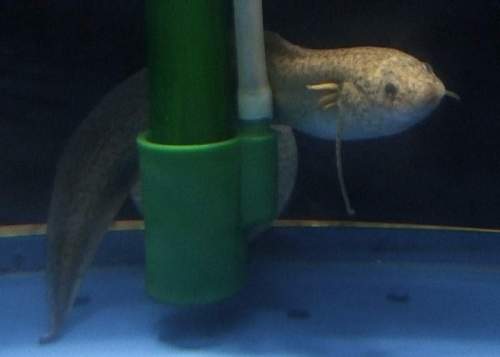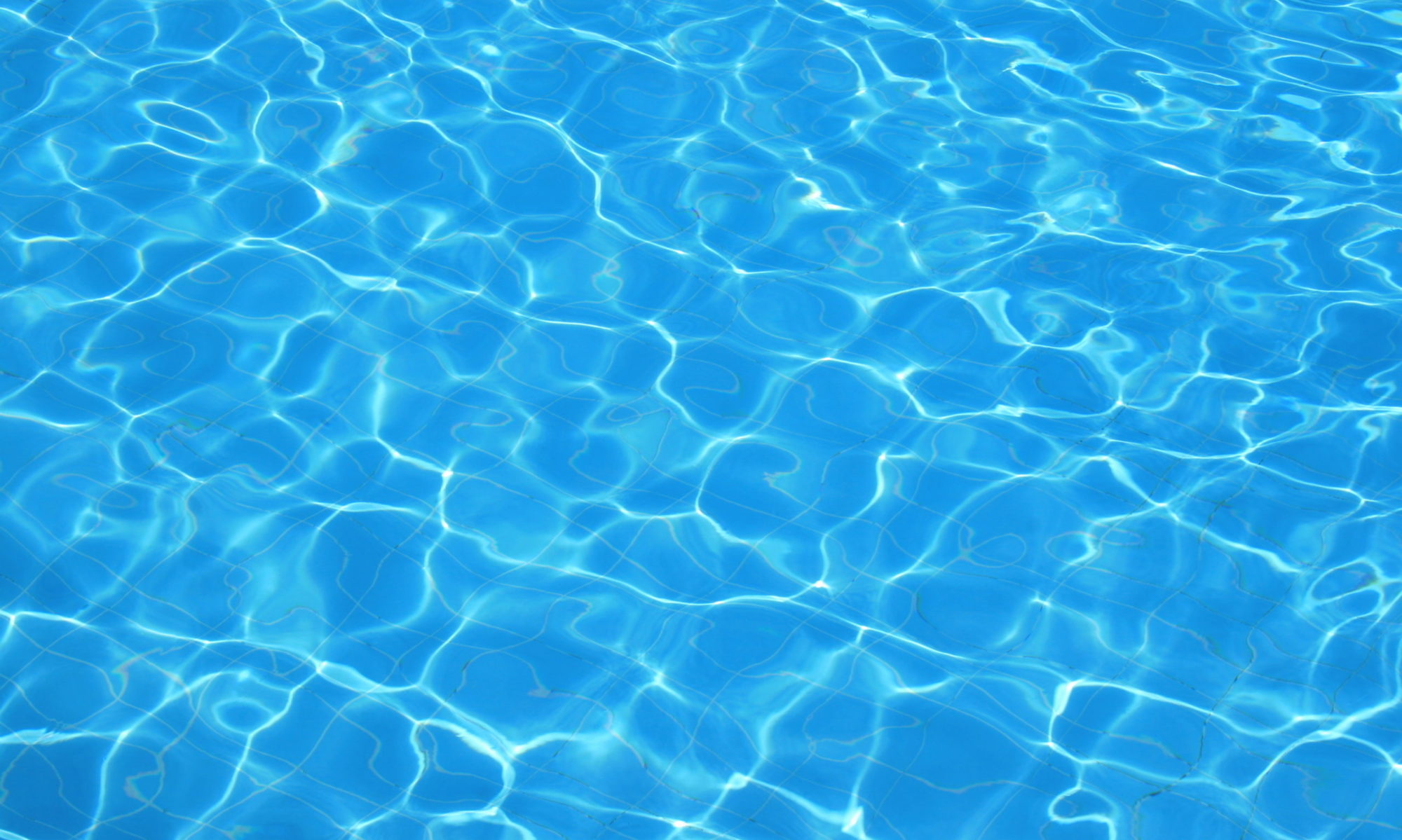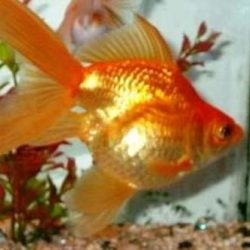Aquarium fish > Marbled lungfish (Protopterus aethiopicus) > Gilled African lungfish – Protopterus amphibius
The gilled African lungfish (Protopterus amphibius) belongs to the Family Protopteridae (African lungfishes) in class Sarcopterygii (fleshy-finned fishes). These fish are also known as East-Coast lungfish, East African lungfish, Gilled lungfish and Kenyan lungfish.
The gilled African lungfish is native to the Sabaki River basin, Shabelle River basin, Tana River basin and Zambezi River basin. They are considered native to Mozambique and Somalia. The claimed presence in Kenya and Tanzania could be due to introduction.
The gilled African lungfish have developed functional lungs, which are the primary breathing organs. These fish are obligate air-breathers. They also have three external gills on each side. Aestivation is another characteristic evolved by these lungfish to withstand desiccation during long dry spells.
The gilled African lungfish hatchlings and young fish have true external gills and tadpole-like appearance. The young fish are completely dependent on the gills for respiration, till they develop lungs.
Gilled African lungfish – Description
The gilled African lungfish has smooth, slimy, elongated, cylindrical, eel-like body tapering into pointed tail. The scales are deeply embedded. The lungfish is bluish or slaty-gray in coloration. There are small darker patches on the body, which may not easily visible. The belly region is pale gray.
The head of gilled African lungfish has a conical profile with the mouth at the anterior end. The mouth can open widely to grasp, crush and swallow the food. Eyes are very small and it is believed that the lungfish tracks its food more by smell-sense.
Its premaxillary and maxillary bones are fused as in all lungfish to form heavily mineralized tooth-plates. The swim bladder has evolved into functional lungs and the gills have reduced function.
The pectoral and pelvic fins are long, thin and fleshy and similar to scaly salamander-fish. The pelvic fins are larger and set far behind and somewhat function like walking/crawling legs.

The dorsal fin of gilled African lungfish originates on the middle of the back and merges with caudal fin. Similarly, the anal fin originating behind the anal opening merges with the caudal fin.
Other behaviors and adaptations
Apart from the ability to breathe air, the gilled African lungfish have undergone several physiological modifications. When the water sources dry up, they undergo aestivation, a state of animal dormancy, characterized by inactivity and a lowered metabolic rate.
The gilled African lungfish burrow 12 to 20 inches into mud and make a chamber of mucus-mud. They leave a few holes on the surface for aeration. They can survive in such state, even for two or three years.
The juveniles are tadpole-like and have four external gills. They entirely depend on these gills for respiration, till they develop lungs. The adult fish also have three external gills on each side.
Habitat and ecosystem
These fish are demersal, preferring to live in the bottom of the water body. Occasionally they come to the surface to gulp air. The gilled African lungfish inhabit river and lake fringes, swamps, floodplains, pools, creeks, tributaries and mangroves with stagnant or slow flowing waters.
Such water bodies have very low dissolved oxygen and are likely to dry up in dry season. The ability to directly breathe air and the capacity for aestivation are the adaptations evolved by the gilled African lungfish for their survival in such conditions.
Distribution
The gilled African lungfish are widely distributed in Eastern Africa, and the coastal regions from Somalia and Kenya, delta of Zambezi River, Sabaki River basin, Shabeelle River basin, Tana River, Lake Rukwa basin and flood plains of Ruaha and lower Rufiji.
They are native fish of Somalia and Mozambique. They might have been introduced into Kenya and Tanzania.
Reproduction and development
With the onset of rainy season and flooding, the mature gilled African lungfish start breeding. The male fish digs and cleans a burrow and one or two females spawn in the pit nest. The female gilled lungfish leaves the pit after releasing the eggs.
The male guards the eggs and young for nearly eight weeks. Apart from protecting the young, the male constantly aerates the water in the nest.The hatchlings have thread-like external gills as in newts and resemble tadpoles.
At this stage they can survive only with the dissolved oxygen in the water. The male gilled African lungfish constantly aerates the water in the nest hole. After 2-3 months, the young fish develop lungs for air breathing.
Life span and size
The maximum recorded length of a wild gilled African lungfish is 17 inches (44 cm). These fish are the smallest of all the lungfish in Africa.
Diet and feeding habits
Juvenile fish feed on aquatic insects, their larvae and also fry of fish. The adult gilled African lungfish is carnivorous, feeds on fish, mollusks, shrimps and large aquatic insects. Sometimes it may also take detritus and algal matter.
Conservation status
IUCN Red List status has evaluated and listed these gilled African lungfish as of ‘Least Concern’ (LC).
Gilled African lungfish aquarium
To accommodate such long-living, lungfish we may require an aquarium of at least 50 gallon capacity. In the aquarium they may be fed with pieces of meat especially fish meat. They may very reluctantly eat pellet and formulated feed.
The tank must have lot of space for movement and also have some hiding spots. The water must be exchanged often to remove the waste materials from such protein food as the water can get polluted easily. Please visit pages on quick facts and Protopterus amphibius aquarium for further information.
Reference: https://www.fishbase.org/summary/8735
Image source: https://en.wikipedia.org/wiki/File:Protopterus_amphibius.png
Image author: opencage.info | License: CC BY-SA 2.5.
Current topic in Aquarium fish pictures: Gilled African lungfish – Protopterus amphibius.

